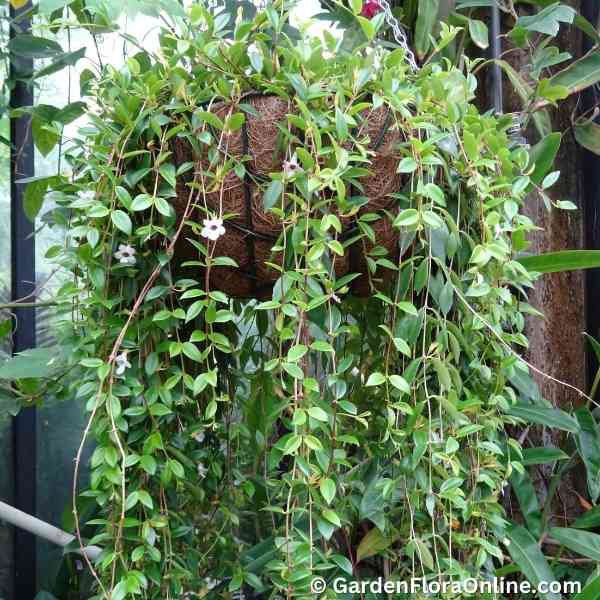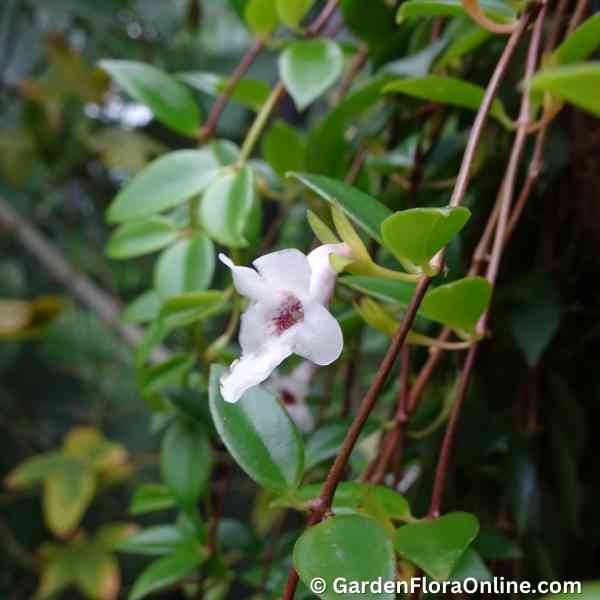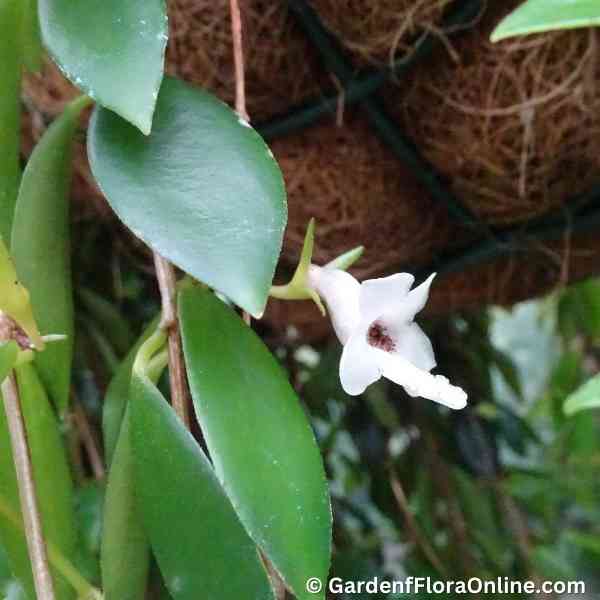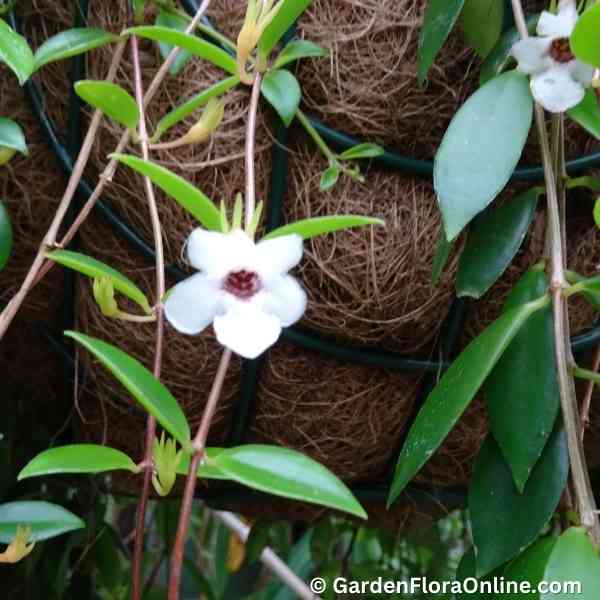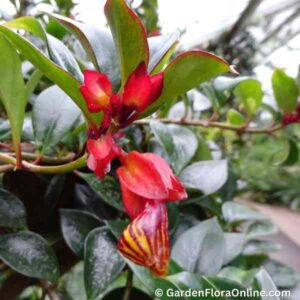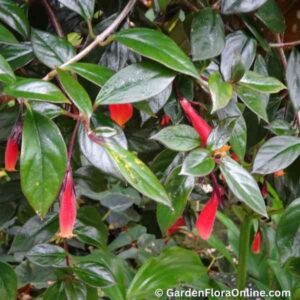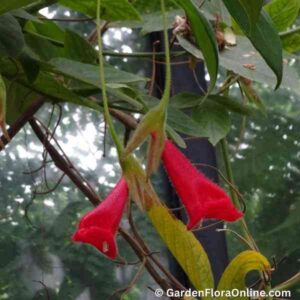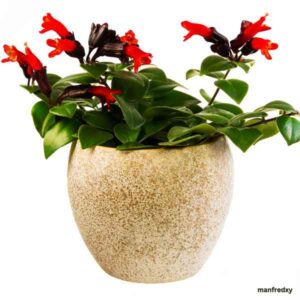Codonanthe gracilis (Bellflower)
Trailing woody perennial with stems reaching 2 meters in length. Leaves ovate, dark green on the upper surface, lighter green on the underside, measuring 1.5 to 3 centimeters in length and 1 to 2 centimeters in width. Flowers white, corolla tube 1.5 to 2 centimeters long, occasionally marked with reddish-brown specks near the base adjacent to the calyx; throat varying from bright to dull dark yellow, sparsely to densely spotted with reddish-brown specks. Fruit orange when ripe, sparsely hairy, with persistent calyx, berries 0.5 to 0.8 centimeters in diameter.
Cultivation: Codonanthe gracilis thrives in bright, indirect light and high humidity, making it well-suited for terrariums or hanging baskets in warm indoor environments. A well-draining mix such as orchid bark combined with peat moss and perlite is ideal. Keep the soil consistently moist but avoid waterlogging. Propagation is easy through stem cuttings, which root readily in moist soil or water. This plant’s graceful, trailing habit and continuous flowering make it a delightful addition to any indoor plant collection.
Etymology: The genus name Codonanthe is derived from the Greek words kodon, meaning bell, and anthos, meaning flower, referring to the bell-shaped flowers of the plants in this genus. The specific epithet gracilis comes from the Latin word gracilis, meaning slender or graceful, referring to the plant’s delicate and slender growth habit.

